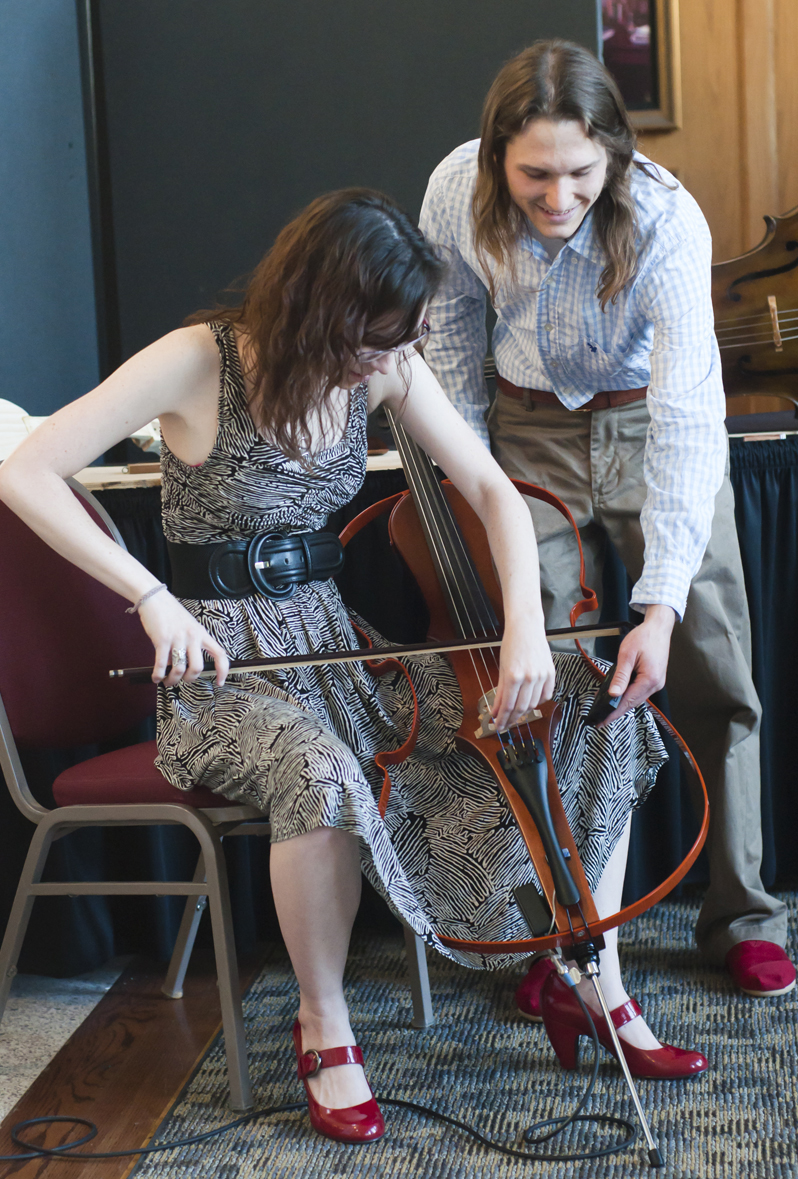Music
Electric cello project wins King Creativity Award
Open gallery

Although electric cellos are available commercially, senior music major Natalie Phillips-Perkoff and senior physics major Will Hardy wanted to try making one of their own. So they teamed up to make one with the help of a 2010-2011 King Creativity Fund grant.
Their work ended up winning them the 2011 Walt Potter Prize, which comes with $2,500. The prize is awarded to the best King Creativity Fund student or project in a given year.
The King Creativity Fund was established in 2000 with an endowment provided by Southwestern alumnus W. Joseph “Joey” King. It is designed to support “innovative and visionary projects” proposed by Southwestern students. The Walt Potter Prize is named after Southwestern University Computer Science Professor Walt Potter, who was King’s mentor when he was a student at Southwestern.
Phillips-Perkoff and Hardy received $2,500 to build the cello. They spent their budget on buying materials and professional luthier tools to hand-carve most of the components for the cello. A few components like the fingerboard and tailpiece that had to be premade were donated by the Blackerby Violin Shop in Austin.
Phillips-Perkoff said they decided to keep the traditional shape and size of the cello while using modern innovations such as a frame made out of aluminum. To make the frame, they cut the shape of a cello out of plywood and then heated the aluminum to bend it into shape. After that was done they sent it to a powder coater who gave it its bright orange color.
Perhaps the most difficult part of the project was creating the sound electronically. That’s where Hardy’s expertise in physics came in. He had to design a process to electronically recreate the sound of a wooden instrument. A piezoelectric vibration sensor produced an electronic signal from the vibrating strings, and a preamplifier that Hardy built boosted the signal and prepared it for final amplification by a standard guitar amp.
Phillips-Perkoff, who is a cellist, said she was very pleased with the sound they were able to get from the cello.
“It sounds like a cello!” she said. Phillips-Perkoff performed a piece on the cello as part of her senior recital April 10.
Paul Gaffney, dean of the Sarofim School of Fine Arts and coordinator of the King Creativity Fund program, said the selection committee for the Walt Potter Prize was impressed with how Phillips-Perkoff and Hardy combined physics and music for their project.
“What impressed us was how complicated the project was – how much they had to do,” Gaffney said. “They had a regular cello bow and regular strings, but that was it – everything else was electronics.”
The electric cello project was not the first King Creativity project that Hardy and Phillips-Perkoff have taken on. In 2008-2009, Hardy and 2010 graduate Pelham Keahey built a Rubens tube and for the past two years, Hardy and other students have used a King Creativity Fund grant to build an automated microorganism detector. The device could enable doctors to determine which pathogen has caused an infection much sooner than existing methods. This year Phillips-Perkoff received another King Creativity grant to fund the Fourth Annual SU Arts Festival, which took place on April 2nd and brought together the Georgetown community and the Southwestern campus for a day of music, art, theater and dance.
Hardy plans to attend graduate school in applied physics next year and Phillips-Perkoff hopes to find a job at a non-profit arts company or education program and teach cello lessons. Her long-term goal is to attend graduate school for orchestral conducting.














